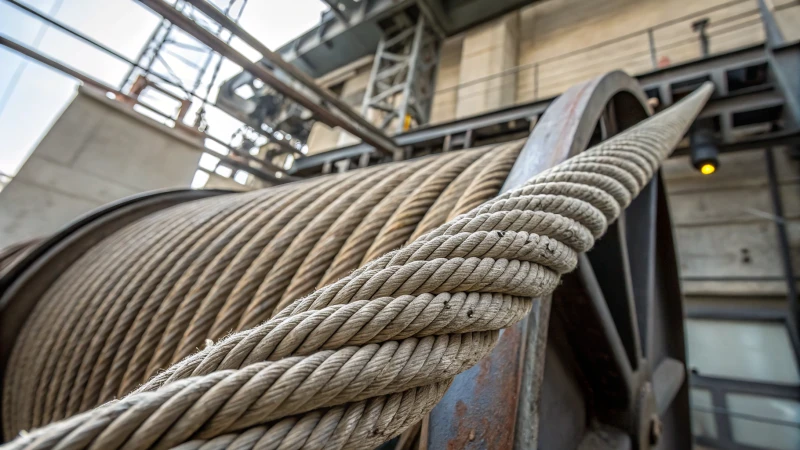
Have you ever wondered what keeps elevators safe as they zip us up and down buildings?
Steel wire ropes are the backbone of elevator safety systems, offering unmatched strength and reliability during sudden stops and falls. Built to meet ISO 4344 standards, these ropes reduce elevator fall risks by up to 40% through their high strength and flexibility.
I still remember the first time I really thought about elevator safety. It was during a ride in an old, creaky lift that seemed to groan with every floor it passed. It got me thinking: what makes these things safe? Steel wire ropes, it turns out, are crucial. They're not just any ropes; they have to withstand unexpected loads and shocks, especially when the emergency brakes kick in. This is where the ISO 4344 standards come into play, ensuring that these ropes are both strong and flexible enough to handle the stress. By digging deeper into their construction, we find how the specific design and maintenance strategies ensure elevators remain safe and efficient—a silent hero of modern infrastructure.
Steel wire ropes reduce elevator fall risk by 40%.True
ISO 4344 standards ensure high strength and flexibility, reducing risks.
Elevators do not require regular maintenance for safety.False
Regular maintenance is crucial to ensure the safety and efficiency of elevators.
What makes steel wire ropes in elevators so essential?
Elevators are more than just moving boxes—they're lifelines in our daily lives. Ever wondered how they stay safe and reliable? The answer lies in the steel wire ropes that power them.
Steel wire ropes in elevators boast high tensile strength, flexibility, and durability. Constructed with multiple strands twisted together, they balance strength and elasticity—essential for elevator safety and functionality.
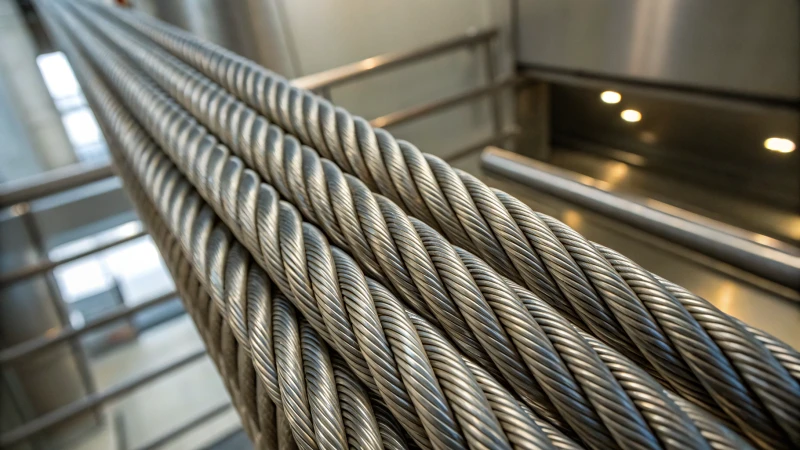
Construction Types and Material Composition
When I first delved into the world of steel wire ropes, I was fascinated by the intricate construction—it's like weaving a safety net for our daily elevator rides. Typically, these ropes are crafted from high-quality steel, with configurations like 6×19 or 8×19 strands1. Each twist and turn is meticulously designed to offer a perfect balance between strength and flexibility. The choice of core material—fiber or steel—further adds to the rope's characteristics. Fiber cores offer a bit more give, while steel cores ramp up the strength factor.
Tensile Strength and Load Capacity
Imagine standing in an elevator packed full after a long day at work. You trust that the cables will hold, right? That's where tensile strength comes into play. These ropes are engineered to handle significant loads without snapping, even during sudden shifts or shocks. Depending on the diameter and construction, the load capacity can be customized to meet specific elevator needs, ensuring that every ride is smooth and secure.
Flexibility and Bending Fatigue
The other day, I watched a documentary about how elevators work, and I learned that flexibility is key. These ropes need to bend gracefully around pulleys and sheaves without breaking—a feat of engineering that always amazes me. The bending fatigue resistance is a testament to the rope's design and the quality of steel used. With proper maintenance, these ropes can endure countless bending cycles, making them reliable companions for years.
Corrosion Resistance and Maintenance
Elevator shafts can be harsh environments—humid and filled with contaminants. To combat this, ropes are often coated with galvanized or stainless steel finishes2 to stave off rust and degradation. Regular maintenance, like lubrication and inspections, is crucial to keeping these ropes in top shape. It reminds me of how I maintain my bicycle chain—keep it clean and oiled, and it serves you well.
Safety Standards Compliance
I remember attending a seminar on safety standards where I learned about ISO 4344. It's fascinating how these international benchmarks ensure that every rope used in elevators meets rigorous performance criteria. By adhering to such standards, we can rest assured that the ropes can handle unexpected loads and shocks, significantly reducing accident risks. Proper dynamic load testing3 further boosts confidence in their capabilities.
| Feature | Description |
|---|---|
| Construction | 6×19 or 8×19 strands |
| Core Type | Fiber or Steel |
| Tensile Strength | High load-bearing capability |
| Corrosion Resistance | Galvanized or stainless coatings |
| Compliance | ISO 4344 standards |
Steel wire ropes in elevators have 6×19 or 8×19 strands.True
These constructions offer a balance of strength and flexibility.
Fiber cores in steel ropes enhance durability over steel cores.False
Fiber cores provide flexibility, while steel cores enhance durability.
How Do ISO 4344 Standards Impact Elevator Safety?
Imagine stepping into an elevator, trusting the cables that silently carry you skyward. ISO 4344 standards ensure that trust isn't misplaced. Curious how these guidelines keep us safe? Let's unravel the mystery behind these crucial safety standards.
ISO 4344 standards ensure the steel wire ropes in elevators meet stringent safety criteria, reducing mechanical failure risks. They define rope construction, testing, and maintenance for enhanced reliability and passenger safety.
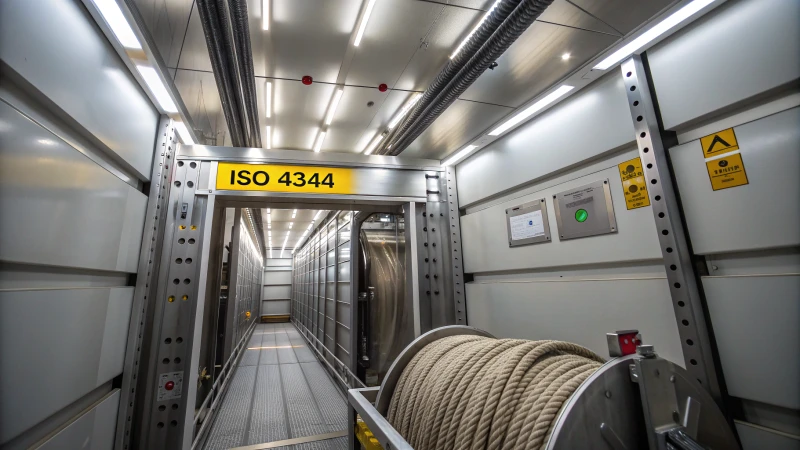
The Core of ISO 4344: Rope Construction and Quality
I still remember the first time I really thought about the ropes holding an elevator together. It was during a visit to a skyscraper construction site. Standing there, I realized these ropes are lifelines—literally. ISO 43444 ensures they are built to precise standards, usually with constructions like 6×36 or 8×19. These are not just numbers but a balance between strength and flexibility, ensuring they can handle the stress of daily operation without failing us.
Dynamic Load Testing and Maintenance Protocols
Think about it this way: elevators experience a lot of stress, much like us during a tough week at work. To prevent these cables from giving out, ISO 4344 includes rigorous dynamic load testing5. This is like a workout for the ropes, simulating real-life conditions to catch potential issues early. I’ve heard stories from colleagues about how these tests have made all the difference, identifying wear and tear before it becomes a hazard. Regular maintenance checks further ensure these ropes live long and perform safely.
Advanced Materials for Enhanced Safety
In a world constantly pushing the boundaries of what's possible, elevator safety is no exception. Imagine using high-tensile steel or superalloys in wire ropes. These materials are like the superheroes of the cable world, offering incredible strength and resistance to wear and tear under extreme conditions. They align with industry advancements6 that aim to enhance safety standards, ensuring every ride is as smooth as possible.
| Material | Benefits |
|---|---|
| High-tensile | Greater load-bearing capacity |
| Superalloys | Enhanced durability under stress |
Impact on Procurement Decisions
For procurement managers like John and Emma, adhering to ISO 4344 is more than a requirement—it's a commitment to safety. I’ve seen how choosing the right suppliers who meet these standards can influence project timelines and safety protocols significantly. Understanding how these standards affect procurement can lead to better supplier relationships and smarter purchasing strategies, ensuring that elevators operate safely and efficiently. Procuring the right materials is not just about compliance but about crafting a legacy of safety and reliability in every building project.
ISO 4344 mandates dynamic load testing for elevator ropes.True
Dynamic load testing is crucial for detecting potential failures early.
High-tensile steel is not used in elevator rope construction.False
High-tensile steel offers greater load-bearing capacity, enhancing safety.
What are the latest advancements in steel wire rope technology?
Ever wondered how steel wire ropes have evolved to meet the demands of modern industries? Let's explore some game-changing innovations that are making them stronger, safer, and more reliable than ever.
Recent advancements in steel wire rope technology include superalloy compositions, dynamic load testing, and corrosion-resistant coatings. These innovations boost durability, safety, and performance under harsh conditions, making them essential for construction and mining industries.
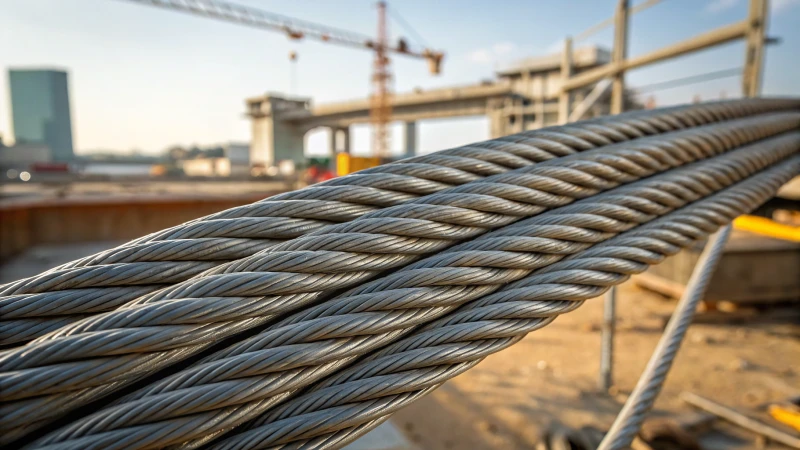
Superalloy Compositions
I remember the first time I heard about superalloy compositions in steel wire ropes. It was like discovering a secret ingredient that could handle anything thrown at it. These high-tensile superalloys are designed to withstand extreme stress, reducing the risk of breakage and making them perfect for heavy machinery7 operations. The increased tensile strength means they can support heavier loads without a hitch.
Dynamic Load Testing
Then there's dynamic load testing, an innovation that's truly a lifesaver. Imagine being able to predict potential failures before they happen! This precise analysis of rope behavior under stress not only enhances safety but also gives peace of mind by ensuring ropes can handle unexpected loads. Studies show that proper selection and maintenance can reduce elevator fall risk by up to 40%, which is reassuring for anyone involved in construction or mining.
Corrosion-Resistant Coatings
If you've ever worked near the sea or in a mine, you know how corrosive those environments can be. That's why the introduction of corrosion-resistant coatings is such a big deal. These specialized coatings dramatically improve the ropes' lifespan by protecting them from the elements, which in turn reduces maintenance costs and increases reliability in harsh conditions8.
| Feature | Benefit |
|---|---|
| Superalloy Compositions | Enhanced strength and durability |
| Dynamic Load Testing | Improved safety and predictive maintenance |
| Corrosion-Resistant Coatings | Extended lifespan and reduced maintenance |
Innovative Manufacturing Techniques
The precision in today's manufacturing techniques is mind-blowing. Techniques like precision braiding and improved heat treatment ensure uniformity in wire tension9 and thickness, eliminating weak points and making the ropes more consistent and reliable.
Smart Monitoring Systems
And let's not forget smart monitoring systems. With sensors embedded in the ropes providing real-time data on tension, temperature, and wear, proactive maintenance becomes a breeze. This is crucial for places like construction sites10, where safety is non-negotiable.
These advancements aren't just about technology—they're about making our work environments safer and more efficient. Whether you're lifting heavy loads on a construction site or ensuring safety in a mining operation, these innovations in steel wire rope technology are transforming the way we think about durability and safety.
Superalloy compositions enhance steel wire rope strength.True
Superalloys increase tensile strength, supporting heavier loads in machinery.
Corrosion-resistant coatings are ineffective in marine environments.False
Specialized coatings significantly improve corrosion resistance, prolonging lifespan.
Why is regular maintenance crucial for elevator wire ropes?
Imagine stepping into an elevator and trusting it to whisk you safely up to your destination. Behind that effortless glide are elevator wire ropes—unsung heroes in the world of vertical transport.
Regular maintenance of elevator wire ropes is vital for ensuring safety, peak performance, and a long lifespan. By conducting routine inspections, lubrication, and tension adjustments, you can prevent wear, minimize failure risks, and adhere to safety standards.
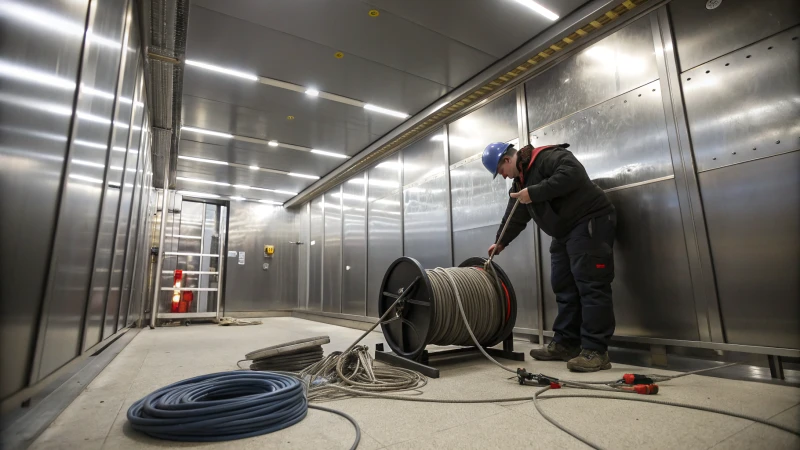
The Role of Elevator Wire Ropes
Let me tell you about the time I first realized just how essential elevator wire ropes are. I was visiting a friend in a high-rise building, and as we ascended, I couldn't help but marvel at the technology behind our smooth ride. Elevator wire ropes are the backbone of this marvel, tasked with the heavy lifting—quite literally—of moving the elevator car up and down safely.
These ropes endure immense stress daily. Like an athlete who never takes a day off, they require regular maintenance to keep performing at their best. Neglect even minor damages, and you risk turning small issues into significant problems that could jeopardize passenger safety and elevator functionality. It's like ignoring a tiny pebble in your shoe; it seems harmless until it causes a blister.
Key Maintenance Practices
- Inspection: Regular inspections are akin to doctor check-ups for your ropes. They help catch potential issues early, such as fraying or corrosion.
- Lubrication: Keeping the ropes well-lubricated is like oiling a squeaky door hinge—essential for smooth operation and longevity.
- Tension Adjustment: Ensuring proper tension is crucial. Too loose, and things slip; too tight, and there's unnecessary strain.
Importance of Regular Inspections
| Inspection Frequency | Actions Taken |
|---|---|
| Weekly | Visual check for visible damage |
| Monthly | Detailed inspection for structural integrity |
| Annually | Comprehensive testing for wear patterns |
I remember the first time I saw a technician perform an inspection on elevator ropes; it was a meticulous process that highlighted the importance of catching wear and tear before it becomes a bigger issue. Regular inspections are like an insurance policy against unexpected failures.
Benefits of Routine Maintenance
Routine maintenance isn't just about ticking boxes; it's about extending the life of your investment and ensuring every ride is as safe as possible. By following recommended guidelines, you not only meet safety standards11 but also avoid costly emergency repairs. Plus, maintaining these ropes properly safeguards the building’s reputation—a crucial factor in today's safety-conscious world.
Expert Recommendations
I've always believed in seeking advice from those who know best, which is why partnering with a trusted supplier12 for quality materials and services is invaluable. Having experts on your side means you stay informed on best practices and receive reliable support.
Investing in a tailored maintenance plan might seem like an added expense, but it's a small price to pay for enhanced performance and safety. After all, who wouldn't want peace of mind when it comes to something as important as elevator safety?
Regular inspections prevent elevator accidents.True
Inspections identify issues early, preventing potential failures and accidents.
Elevator wire ropes require no lubrication.False
Lubrication reduces friction, minimizing wear and extending rope life.
Conclusion
Steel wire ropes are essential for elevator safety, providing strength and flexibility that reduce fall risks by 40%, while adhering to ISO 4344 standards for reliability and performance.
-
Understanding various construction types helps in selecting the right rope for specific elevator needs. ↩
-
Exploring corrosion prevention extends rope lifespan and maintains safety standards. ↩
-
Dynamic load testing ensures ropes can withstand operational stresses effectively. ↩
-
Explores how ISO 4344 influences the construction and maintenance of elevator safety systems, vital for industry compliance. ↩
-
Reveals insights into testing processes that simulate real-world stress conditions on elevator ropes, enhancing safety. ↩
-
Highlights innovations in material use that increase rope durability and performance under extreme conditions. ↩
-
Learn about the enhanced strength benefits of superalloy compositions in steel wire ropes. ↩
-
Explore how modern coatings improve steel wire rope durability in harsh environments. ↩
-
Discover how precision braiding techniques ensure consistency in steel wire rope production. ↩
-
Understand how smart monitoring systems enhance safety by tracking real-time rope conditions. ↩
-
Discover the safety standards required for elevator wire ropes to ensure compliance. ↩
-
Find suppliers who offer reliable materials and expert maintenance services. ↩

